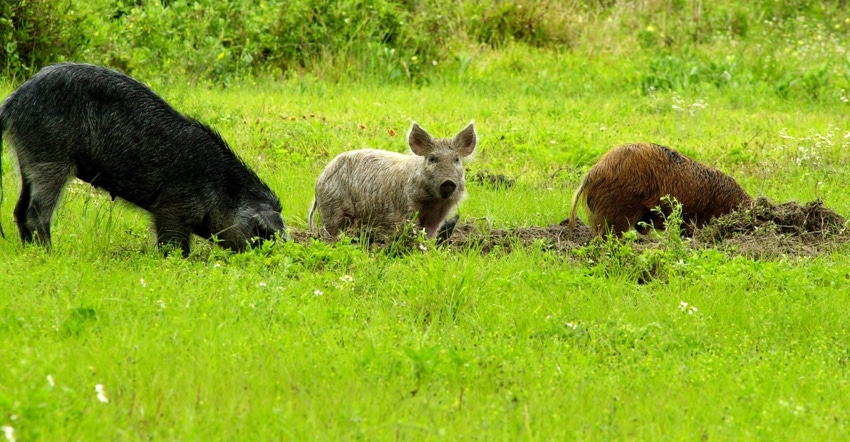At least 60 diseases harbored in more than 6 million feral swine present in U.S. today.
November 14, 2019

In countries where African swine fever (ASF) is endemic, it persists in native populations of wild pigs and feral swine. Feral swine populations are expected to grow 21% to more than 7 million animals in the U.S., posing a significant threat to disease introduction.
During testimony at a House agriculture subcommittee hearing, Josh Gaskamp, technical consultation manager and wildlife and range consultant at the Noble Research Institute, stated, “Here, in the United States, until getting hold of the feral swine population, we won't have a good way to control African swine fever if it gets into feral swine populations.”
Gaskamp said feral swine harbor 66 diseases important to agriculture, and that doesn't include foot and mouth disease (FMD) or ASF. He added that feral swine are a “huge reservoir for diseases that could harm U.S. agriculture.”
Beth Thompson, executive director of the Minnesota Board of Animal Health and state veterinarian, noted that although it has not been detected in the feral swine population, ASF is a “very hardy” virus. She did add that the experience from the avian influenza outbreak in 2014 has helped provide additional insight into surveillance and biosecurity needed to address animal health disease threats, including ASF and FMD.
According to the U.S. Department of Agriculture's Animal & Plant Health Inspection Service, feral swine have been reported in at least 35 states. Their population is estimated to be more than 6 million and is rapidly expanding. Range expansion over the last few decades is due to a variety of factors, including their adaptability to a variety of climates and conditions, translocation by people and a lack of natural predators.
Gaskamp said feral swine damage is estimated at $1.5 billion annually, but those estimates don't even account for the ecological damage and threats to human health. The 2005 Escherichia coli outbreak in spinach was linked to feral hogs.
Gaskamp said studies have shown that 70% of feral swine must be eliminated yearly to stay on top of overpopulation, yet most conventional trapping methods remove less than 50% of estimated feral swine.
New success has been found in air-suspended traps. Air-gun eradication designed for control, not recreation, has also been effective. The hunting of feral swine has actually created some situations where populations have increased because the hunting mentality is to promote, rather than control, populations, Gaskamp noted.
Additional research is looking at using toxicants to control feral swine populations. In Australia, where there are more feral swine than people, this is commonly used. However, there are fewer native species of wildlife that could also be affected.
You May Also Like

.png?width=300&auto=webp&quality=80&disable=upscale)

